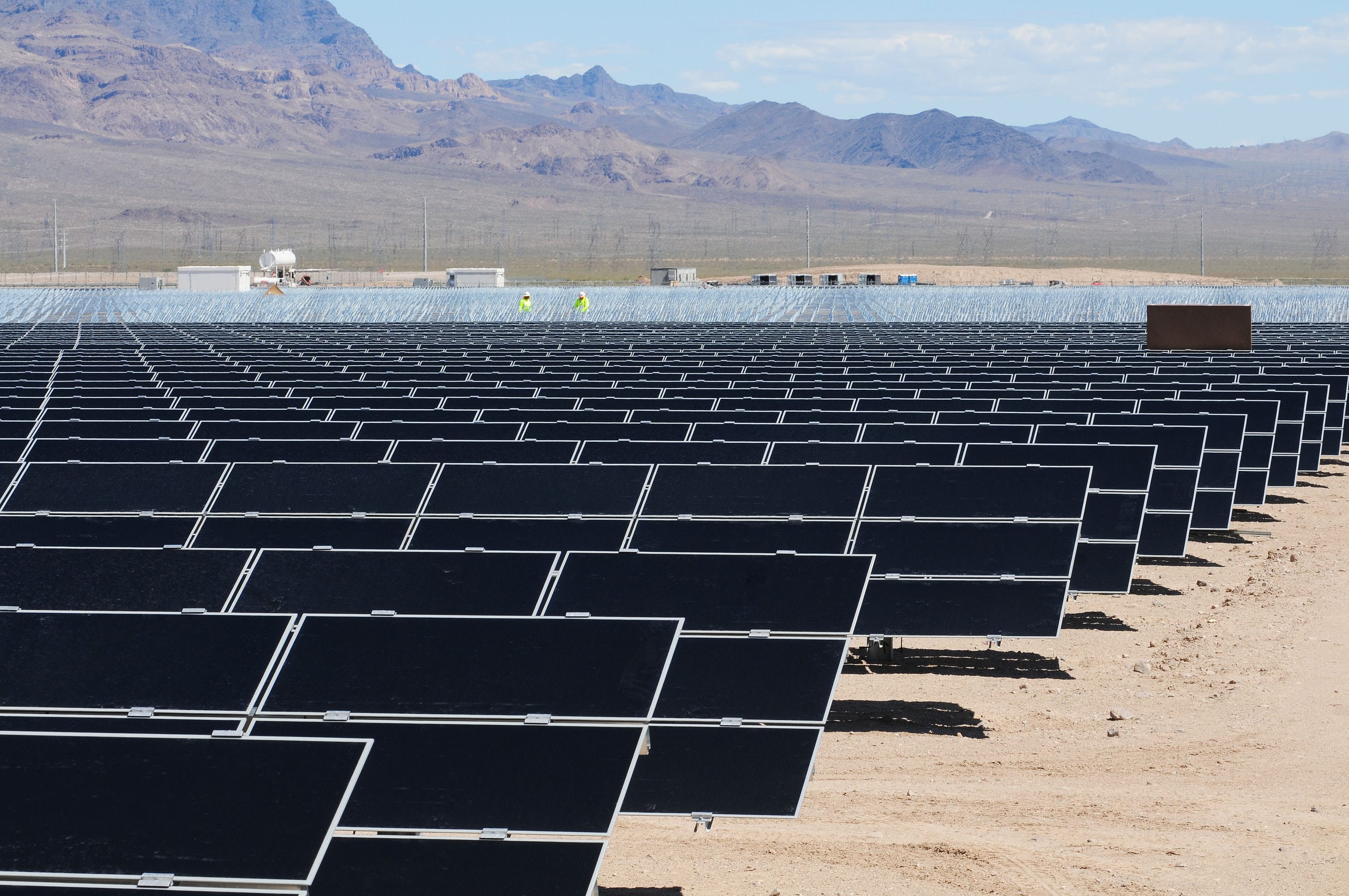La Paz County, Arizona, could soon be the site of a large-scale solar energy facility if the U.S. government approves Jove Solar LLC’s application for a 30-year right-of-way grant. The project’s plan and the environmental concerns were discussed during a virtual public scoping meeting held by the Bureau of Land Management Tuesday.
LEARN MORE: Vermaland has development contracts for 16 solar farm sites
If approved, the Jove Solar Project would produce up to 600 megawatts of energy to sell to either California or Arizona, which would support the growing energy demand. The site would include 3,495 acres of public land managed by the Bureau of Land Management (BLM) and an additional 38 acres of land in La Paz County.
The project’s location is situated on variance land approximately 22 miles east-southeast of Brenda and 30 miles west of Tonopah. Since the project will be constructed on variance land, Jove Solar is required to apply for permission to begin this project. This application includes approval from entities such as the BLM, Arizona Game and Fish Department (AZGFD), and U.S. Fish and Wildlife Service (FWS) before Jove Solar can begin construction.
Variance land is not identified as a solar energy zone and is not permitted for a solar energy facility. The 30-year right-of-way grant would allow Jove Solar to build the project on variance land as long as they were in compliance with the regulations set by the BLM, the Federal Land Policy and Management Act, and other federal laws and regulations.
The AZGFD as well as the public have expressed concerns over certain animals that would be impacted by the project. For instance, Pronghorn Antelope are sometimes spotted in or near the site and are a part of the Endangered Species Act. However, this specific population of Pronghorn Antelope is considered a nonessential experimental population and does not depend on the survival of the species, according to the Variance Process Report for the Jove Solar Project.
The FWS raised concerns regarding a “lake effect” which is common for solar energy facilities. Lake effect is a theory that reflective material on a solar panel may attract and cause harm to birds. Ford Mauney, a wildlife biologist at the BLM, said this is a major concern for this project. “We will be monitoring for impacts on birds,” Mauney told meeting participants.
The location of the solar facility was chosen due to several factors: flat and undeveloped land, the potential to reduce or avoid harmful environmental impacts, the proximity to the energy transmission line, and the weather conditions that allow for unobstructed solar radiation, according to the Variance Process Report.
Once approved, the project is scheduled to begin in 2024 with tasks such as engineering, surveys, and pre-clearing. Construction is estimated to begin in 2025 with an anticipated completion of early 2027, according to Erica Stewart, a wildlife biologist and project manager for the BLM.
Generally, solar projects of this type have a lifespan of 30 to 40 years. The Jove Solar Project application was for a 30-year right-of-way which includes a reclamation bond, according to Stewart. This means “the company would be responsible for returning the land back to what is there currently, prior to construction,” said Stewart.
During the construction phase, an average of 300 temporary workers would be employed, with a peak of 600 temporary workers. Temporary workers would include employees of construction companies and commercial electricians, according to Stewart. Once the project is complete, six to eight permanent workers would be needed to ensure the facility is performing properly. “It’s pretty self-sufficient,” said Rick Hohenstein, the project manager for 174 Power Global, which owns Jove Solar LLC.
The estimated cost of this project was not released, but Jove Solar LLC will be responsible for the entire amount, according Stephanie Lauer, who is the environmental permitting manager for 174 Power Global.
Several solar energy zones (SEZ) throughout Arizona were considered. However, none of these SEZs had enough land to support this project.




